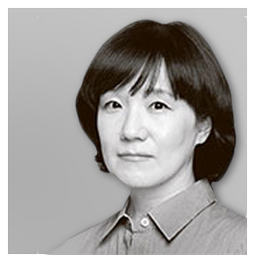What is a family?

The author is an editorial writer of the JoongAng Ilbo.
French economist and thinker Jacques Attali predicted that by 2030, the institution of marriage will disappear and 90 percent of couples will live together without being legally married. In France, even the president is not married to his partner. American anthropologist Helen Fisher said that the practice of marriage has changed more in the last 100 years than it has in the previous 10,000 years, and future changes will be more dramatic.
The “traditional marriage” that people think of today — a man and a woman getting married because they love each other, the man as a breadwinner and the woman as a homemaker — is actually a new form of marriage that culminated in the “golden age of marriage” in the 1950s.
Last month, the United Kingdom permitted opposite-sex couples to have civil partnerships. Civil partnerships are a relationship emphasizing sexual equality while providing the same legal benefits of inheritance, taxation, pension and childcare as traditional marriages. Instead of husbands and wives, those in civil unions are called civil partners.
The British media reported that it is the biggest change to their society in the past two centuries. The potential impact on boosting the birth rate is noteworthy. France introduced a similar civil solidarity pact in 1999, and the declining birth rate was reversed. In France, couples are given the same taxation, childcare, education and social security benefits as those that are legally married. Last year, 59.9 percent of newborn children in France were born to unmarried parents.
Other European countries like the Netherlands and Sweden recognize the same rights in civil unions and legal marriages. The number of newborns out of wedlock is constantly increasing. According to official EU statistical information agency Eurostat, the number of babies born outside marriage is more than half of the total number of newborns in ten European countries, including Iceland, France, the Netherlands, Sweden, Portugal and Denmark. These countries generally have higher birth rates.

Nurses take care of newborn babies in an infant unit at a maternity hospital in Seoul. The fertility rate of Korea has been dropping to as low as 1.05 last year. [YONHAP]
Family policy needs to actively reflect the changes that the survey shows. Without social changes that match the increase in non-traditional families — formed neither by blood, nor by marriage — policies cannot be effective.
At a seminar hosted by the Presidential Committee on Aging Society and Population Policy on Oct. 31, attendees agreed that rather than focusing on increasing the total birth rate, it would be more realistic to enhance support for pregnancy and childbirth for single mothers and resolve systematic discrimination against childbirth and childcare for unmarried couples. The need to create laws that prohibit social discrimination against unmarried families and support amarital families was also discussed.
Of course, drafting legislation for families outside the confines of marriage is a challenge that requires discussion due to the high regard many hold for traditional family values.
Minister of Gender Equality and Family Jin Seon-mi had proposed a living partner act when she was a lawmaker, but the attempt never got off the ground. The Framework Act on Healthy Homes, which is the bases for current family administration, defines a family as “a unit of more than two members formed by marriage, blood or adoption.”
As of 2017, 5.61 million people live in single-person households, and 28.6 percent of households are not categorized as a “family.” There are no statistics on families living together without being legally married. Statistics Korea’s survey shows that we can no longer exclude such families from discussions in the name of “healthy homes.”
JoongAng Sunday, Nov. 10, Page 34










with the Korea JoongAng Daily
To write comments, please log in to one of the accounts.
Standards Board Policy (0/250자)